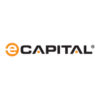
Invoice Discounting or Financing – What Is The Difference?
When businesses are looking to source alternative funding solutions, an increasingly popular form is that what is commonly known as Invoice Finance. This generic term refers to both Invoice Discounting and Financing which are the most common variations or solutions of Invoice Finance.
So how do they differ?
-
Finance
Both solutions provide finance against a firms’ unpaid invoices – typically up to 90% – which is paid within 24 hours.
-
Finance but with credit control
The key difference is that with invoice financing, included as part of this solution is a comprehensive sales ledger management service which sees the Invoice Financier manage invoice payment collections on behalf of the “client” or the business’s customers. With Invoice Discounting however, the client retains responsibility for liaising with its own customers and collecting in payments when due.
-
Confidentiality
With Invoice Discounting , a business can have the option of a confidential service. This means that a business /client can continue to invoice and collect payment from their customers, and these customers will pay amounts when due, into a designated Trust Account held in the client’s business name, but which ultimately belongs to the Invoice Financier. Businesses like this option because their customers are unaware that they are using an invoice discounting facility.
With invoice financing, the Invoice Financier deals directly with a client’s customers – so these customers will be notified and made aware that their supplier (the client) is using this type of finance.
Some clients might not want their customers to know that they are utilising an Invoice Finance facility and therefore may opt for confidentiality. This type of solution however will only be offered if a client has in place, robust invoicing and credit control processes and procedures.
-
Fees
There are two headline fees associated with these types of solution.
Firstly, a finance fee which is based on the amount of funds that a client will use and is normally a pre agreed percentage over the bank base rate. The fee charged will depend on how much funding a client will draw down or access – generally, the more a client uses, the lower the percentage rate.
The second fee is for the service that a client will receive from the Invoice Financier and is charged as a percentage of its annual turnover – up to 3%. With Invoice Discounting the fee will be smaller – typically 1-1.5% – because the service offered is not as comprehensive as the service that a client would receive had they opted for a full financing solution. With invoice financing, it can cost up to 3% of a client’s annual turnover but this does include a full, comprehensive sales ledger management and collections service. For some client businesses, there may not be a dedicated finance team, and the owner or director may end up driving sales whilst having to oversee the collection of customer payments at the same time – which is not ideal. By opting for invoice financing inancing, the credit control service is included and this will deliver many benefits because it frees up valuable time and resources for clients to focus on their business, rather than having to become absorbed into time consuming sales ledger administration and management. This is, however, why invoice financing is usually more expensive than invoice discounting.
-
Flexibility
Invoice financing. With Invoice Discounting, the lender will usually require a client to finance its entire sales ledger. Some businesses will be happy with this, but others may prefer to only finance specific invoices, which is available as an option under the invoice financing umbrella.
More commonly known as selective invoice finance or ‘spot factoring’, this solution will permit a client to choose single invoices, specific clients, or specific projects to fund.
Selective invoice finance and spot factoring are difficult to secure if a client’s business is small or hasn’t been trading long — but offers a greater degree of flexibility to a business to target larger invoices or highly concentrated debtor ( customer) accounts.
Conclusion
Some business owners will prefer to make use of the sales ledger management and invoice collection solution, because of the time and resource savings on offer and the professional way in which an Invoice Financier will undertake this key function on their behalf. Others however may prefer to continue dealing with their customers themselves. Having the choice between invoice financing and Invoice Discounting will generally be governed by a client’s business’s size and turnover, whether they require a credit control service, and whether they require a funding solution to remain confidential and discreet or not.
Thankfully as every client’s funding needs are unique, there is no right or wrong answer — whatever finance they choose, it’s about securing what is right for them both now and moving forward along their business journey.
eCapital Commercial Finance offers flexible invoice financing solutions designed to help improve business cashflow. For more information call us on 0800 007 3080.


